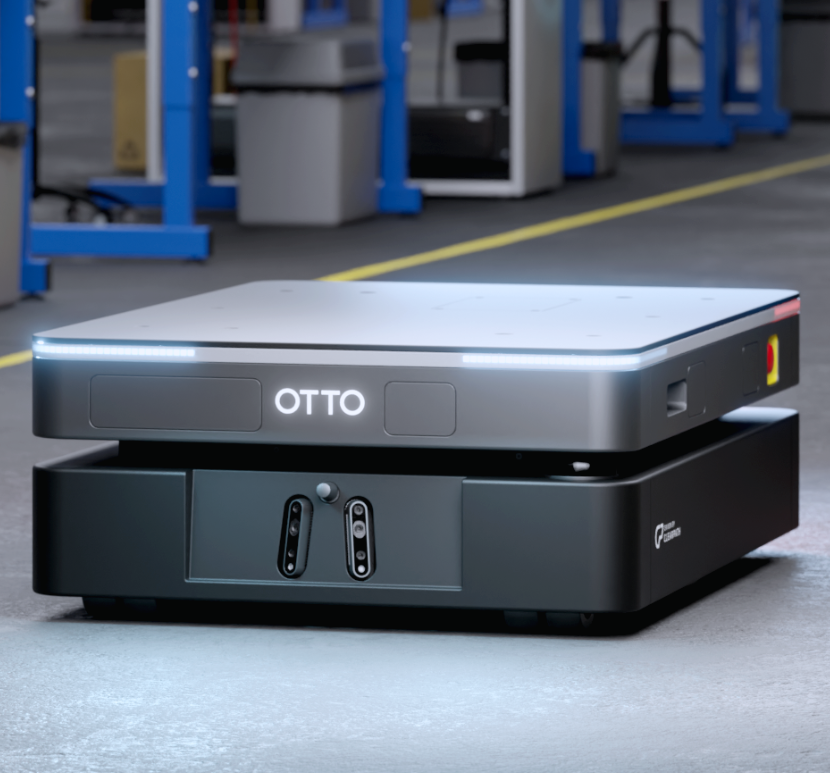Blog
The future of supply chains: Top takeaways from MHI’s leading industry report and trade show

During the show, we ran the most ambitious AMR demo on the show floor, with three flatbed AMRs—OTTO 100, OTTO 1500 and the newly launched OTTO 600—as well as OTTO Lifter, the world’s smartest autonomous forklift. These four robots worked collaboratively and harmoniously while making their own independent decisions within the confines of a trade show booth.
We had hundreds of meaningful conversations with supply chain professionals in our booth, and saw countless innovative technologies on display, indicating that supply chain management is rapidly advancing. In fact, 74% of respondents are increasing their investments in supply chain technology and innovation over the next two years, according to MHI’s 2023 Annual Industry Report.
Through ProMat conversations and observations, as well as an in-depth analysis of MHI’s Annual Industry Report, these are the top three themes and takeaways that best predict the future of supply chains.
1. Adoption of robotics and automation is rapidly growing across the supply chain
Manufacturing warehouses and factories no longer see robotics and automation as exclusively forward-thinking. Innovative technologies are now seen as a necessity, and any facility without them is considered to be falling behind. The MHI Annual Industry Report even described Robotics and Automation as “table stakes for operations to remain competitive.”
Investment in supply chain technology is growing this year as well, demonstrated by the record-setting registrations for ProMat 2023 and our conversations with motivated attendees.
In fact, 90% of MHI’s Annual Industry Report respondents plan to spend more than $1 million on supply chain technology over the next two years, up from 66% in 2022. Of this, nearly 80% want to adopt robotics and automation in their operations, and ProMat met this increase in demand with a solution center dedicated to robotics and automation.

Investment in supply chain innovations has risen over the past few years, with the dollar value of investments growing significantly.
As automotive manufacturers retool operations and construct new plants across North America to meet growing electric vehicle demand, automation of material handling is increasingly adopted by top automotive manufacturers more than any other industry. In fact, in 2022, 55% of all robot units ordered went to the automotive industry. Companies spanning the food and beverage, heavy industrial and consumer goods industries also had a strong presence at ProMat searching for an automation solution.
Since most manufacturing is not lights out, material handling automation technologies need to share space with people and other automation without risking accidents or traffic jams. AMRs provide the safety and predictability of automated guided vehicles (AGVs) without sacrificing the flexibility and adaptability in tight spaces that people offer. Thus, we predict rapid growth of AMRs this year and in the coming years, across a variety of industries.
2. Labor challenges remain top of mind for supply chain professionals searching for automation solutions
In years past, automation conversations with attendees at ProMat centered around the need for efficiency improvements in manufacturing facilities and warehouses. Now, it’s all about the global labor shortage and how to mitigate it.
According to the 2023 MHI Annual Industry Report, companies cited “hiring and retaining qualified workers” and the global “talent shortage” as their top two challenges this year. Hiring and retaining qualified workers has been a top two challenge in every MHI Annual Industry Report since 2016.

MHI’s 2023 Annual Industry Report shows “hiring and retaining qualified workers” and “talent shortage” as the top two company challenges.
The industry has a solution, though. From micro-fulfillment to piece picking to material movement, automation can help tackle common, time-consuming workflows so your existing team can focus on more value-added tasks. It’s no wonder that 39% of MHI’s Annual Industry Report respondents said robotics and automation have the potential to create a competitive advantage.
Discussions with attendees didn’t stop at labor shortage, however. Supply chain professionals are also looking for automation to help them increase production, retool facilities, increase business continuity, improve employee safety and onshore production—all with less access to labor than ever before.
3. One automation vendor cannot solve all company challenges
While automation implementation is on the rise to solve a variety of top challenges, one supplier simply cannot automate an entire facility. Thus, an increasing number of suppliers are partnering with other companies to provide more options for manufacturers.

OTTO Motors partners with Jtec to provide lifts and conveyors for OTTO AMRs, expanding the possibilities of autonomous material handling.
Even within the material handling automation space, vendors understand that one solution may not be right across an entire facility. That’s why interoperability standards are becoming increasingly prevalent, including the popular standard VDA5050, which OTTO Motors supports. Manufacturers need a solution that can work seamlessly with other automation technologies, including AGVs.
Over the past few years, many conversations with ProMat attendees were centered around the differences between AMRs and AGVs. This year, however, supply chain professionals came to ProMat already understanding the differences. Now, it’s about what each vendor can do better than their competitors. Attendees know whether they need AMRs, AGVs, or both, and now want to see live demonstrations of the products on the show floor as they make their decisions.
Throughout ProMat 2023, we learned a lot from attendees and other exhibitors. It’s clear that supply chain professionals are committed to investment in innovation and technology, and are turning to robotics and automation as the starting point. We look forward to the meaningful conversations we’ll have throughout the rest of the year at many more conferences and trade shows. You can see our live demo next in booth #4832 at Automate in Detroit, MI from May 22-25, 2023.






